It was probably in the shampoo you used this morning, or the soap you scrubbed yourself with, the toothpaste you brushed with, the vitamin pills you swallowed or the make-up you applied. It might have been in the bread you toasted for breakfast, or the margarine you smeared on it, or in the creamer you stirred into your coffee. If you used butter and milk, the cow those came from was probably fattened on it too. It’s almost certain that you’ve used palm oil today.
Even the vehicle you travelled in today – bus, train, or car – ran on fuel containing palm oil. Much of the diesel and petrol we use has a component of biofuel added to it, which mainly comes from palm oil. Even the electricity that powers the device you’re reading this on may have been generated in part from burning oil palm kernels.
Palm oil is the world’s most popular vegetable oil. It’s in 50% of consumer products, as well as playing a central role in a slew of industrial applications. Farmers produced 77 million tonnes of palm oil for the global market in 2018, and that is expected to grow to 107.6 million tonnes by 2024.
Palm oil’s ubiquitous presence in our lives is, in part, down to its unique chemistry. Harvested from the seeds of the West African oil palm, it’s pale in colour and odourless, making it a convenient food additive. The oil has a high melting point and is high in saturated fats, which is ideal for creating melt-in-the-mouth creams and confectionaries. Most other vegetable oils need to be partially hydrogenated – where hydrogen atoms are chemically added to the fat molecules – to achieve the same consistency, a process which results in unhealthy trans-fats. (Find out more about saturated fats.)
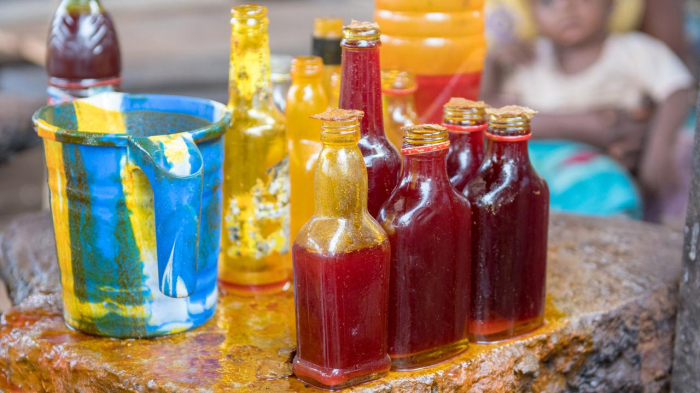
The unique chemistry of palm oil give it a high melting point and make it high in saturated fats, meaning it is hugely versatile (Credit: Getty Images)
Palm oil’s unique chemistry can also survive the high temperatures involved in cooking, and it’s very resistant to spoilage, bestowing a long shelf life upon products it is in. The oil can also be burned for fuel, as can the palm kernels left over after processing. The shells can be crushed and used to make concrete, and the ash left after burning the palm fibres and kernels can be used as a replacement for cement.
Oil palms are also easy to grow in the tropics and highly profitable for farmers, even in difficult soils, which has seen the area turned over to growing this crop rapidly increase in recent years.
Indonesia and Malaysia alone boast around 13 million hectares of oil palm plantation, almost half the world’s total
But the rapid expansion of oil palm plantations is blamed for massive deforestation in Indonesia and Malaysia, and destroying the habitat of endangered native wildlife there, such as the orangutan, and increasing their risk of extinction. Those two nations alone boast around 13 million hectares of oil palm plantation, almost half the world’s total. According to Global Forest Watch, Indonesia lost 25.6 million hectares of tree cover between 2001 and 2018, an area almost as large as New Zealand. (Find out more about the environmental impact that palm oil is having around the world.)
This has put governments and businesses under pressure to find alternatives to palm oil. But replacing a miracle product isn’t easy. Supermarket chain Iceland won praise in 2018 when it announced it would phase out palm oil from all its own-brand products (even releasing a heartrending Christmas advert featuring a homeless orangutan that was banned for being overtly political). Yet removing palm oil from some of the products proved so difficult that in the following year, the company removed its name from the branding instead.
Food giant General Mills – one of the biggest purchasers of palm oil in the US – has encountered similar trouble. “While we have looked at this in the past, palm oil provides very unique physical performance characteristics that are highly challenging to duplicate,” says spokesperson Mollie Wulff.
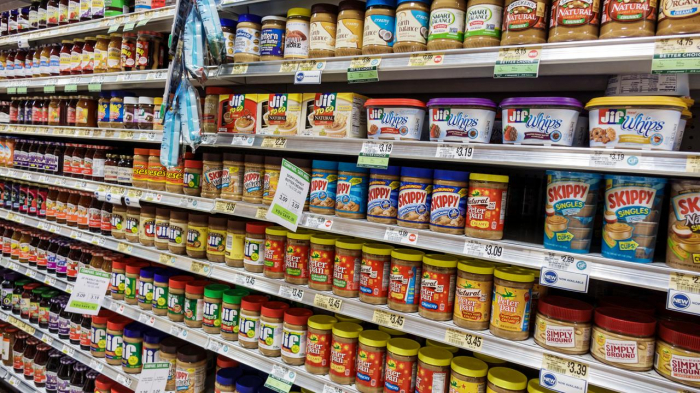
The "melt in the mouth" texture possible with palm oil make it perfect for use in peanut butter and other spreads (Credit: Getty Images)
The most common approach is to find other vegetable oils that offer similar properties. When designing a palm oil free soap, UK cosmetics brand LUSH shifted to a blend of rapeseed and coconut oil. It has since gone further and developed Movis, a custom-made soap base that contains sunflower oil, cocoa butter, extra virgin coconut oil, and wheatgerm.
Meanwhile, food and cosmetic scientists are making concoctions with even more exotic alternatives, such as oils from shea, sal, jojoba, kokum, illipé, jatropha and mango kernels. By partially hydrogenating and blending these “exotic oils”, a blend with similar properties to palm oil can be created. But none of these ingredients are as cheap or readily available as palm oil. African shea nuts, for example, are collected and sold in small volumes by local communities, rather than grown in plantation, making the supply small and vulnerable to disruption.
These aren’t the only recipes that could be tweaked to dispense with the palm oil. Like soya – another crop blamed for driving the destruction of rainforests – a major destination for palm oil is livestock feed and including pet food. As well as being highly calorific, palm oil is rich in essential fatty acids and aids the absorption of fat-soluble vitamins. As global demand for meat, poultry and dairy products increases, the demand for palm oil will likewise grow.
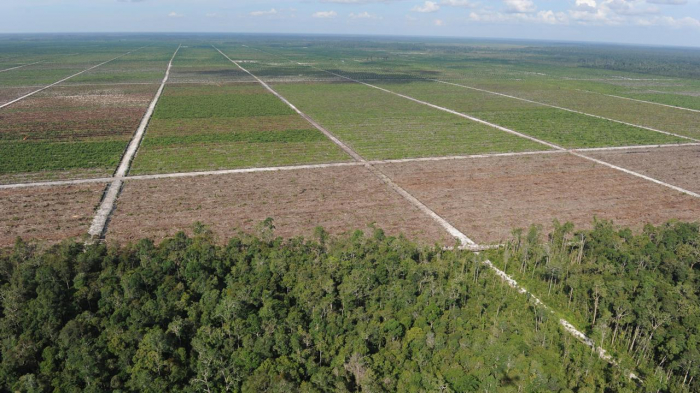
The destruction of rainforest to make way for oil palm plantations turns rich, vibrant habitats packed with species into desolate monocultures (Credit: Getty Images)
Researchers at the Poznań University of Life Sciences in Poland have been investigating whether palm oil in chicken feed can be replaced with a more sustainable source of nutrition: insects. The team fed chickens a diet supplemented with mealworm oil instead of palm oil, and found that they grew just as well, and showed improvements in the quality of their meat. Mealworms also have a high protein content, and can be raised on food waste. The British Veterinary Society recently concluded that insect-based pet food would be better for animals than top quality steak, and better for the environment too.
Green fuels
Despite its ubiquitous presence in larders and bathrooms, more than half of the palm oil imported to the European Union in 2017 was used for something else – fuel. The EU’s Renewable Energy Directive set an ambitious target for 10% of road transport energy to come from renewable sources by 2020, and biodiesel made from palm oil had been a major contributor to reaching that goal. But in 2019, the EU announced that biofuels derived from palm oil and other food-based crops would have to be phased out because of the environmental damage associated with their production.
The move has left the EU searching for an alternative. One option is algae. Oil from certain species of algae can be turned into a “biocrude” that can then be distilled into a range of fuels that could replace diesel, jet fuel and even heavy shipping oil. This might not be as strange as it seems: the majority of oil fields around the world are the fossilised remains of algae.
David Nelson is one plant geneticist who has been investigating the promise of algae. His research into the genetics of Chloroidium, a microscopic alga common in Abu Dhabi suggests it could be a viable alternative to palm oil.
“We have an interesting climate here, not a lot of rain, it can be hot in the summer, so anything that grows has to be able to cope with that,” says Nelson, who is based at the New York University Abu Dhabi. “One way this alga does that is by producing this oil.”
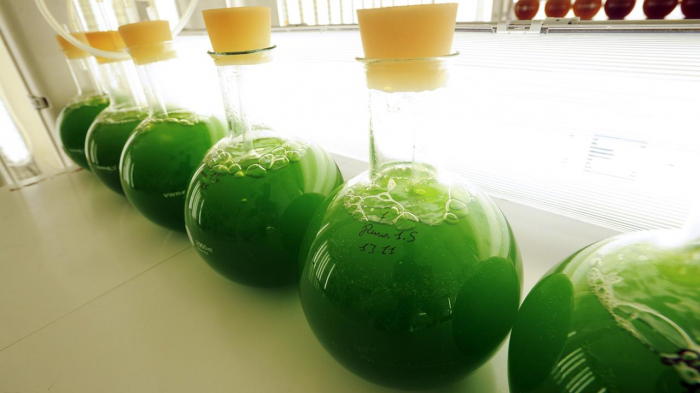
Oil can be extracted from algae but growing it on a scale that could compete with palm oil is proving difficult (Credit: Getty Images)
The alga produces an oil very similar to palm oil, coating its spores to help them survive the arid conditions. His team hopes to grow the alga in vats or open ponds, allowing this oil to be harvested. But Nelson says it may require a major shift in the market for it to take off.
“If politicians say ‘No, we’re not going to take palm oil’, then there’s a really open and good market for algal palm oil,” he says.
Nelson isn’t the only one hoping for an algal boom. In 2017 ExxonMobil and Synthetic Genomics announced they had created a strain of algae that produced double the amount of oil as its predecessor. Last year, carmaker Honda installed an experimental algal farm at its Ohio plant that captures carbon dioxide from the engine test centres. They hope to make the system modular, to allow more plants to adopt it. And the San Francisco-based biotech firm Solazyme has already developed algal-derived fuels for automobile, aircraft and military applications.
But getting these products to the point where they can compete economically and at scale with palm oil is a major hurdle. In 2013, Ohio University began a pilot algal farm, but the man in charge, mechanical engineer David Bayless, confesses that he had little progress to show in the six years since. “The short answer is no, we are not closer. The problem remains economics and commercial algal oil production for the commodity market is still far on the horizon,” he says. “I wish I had better news for you.”
Under ideal conditions, high-yield oil palm cultivars can produce more than 25 times as much oil as soy can for the same area of farmland
Some firms are also investigating whether yeasts can be engineered to produce the kinds of oils demanded by the food and cosmetic industry, although work here is at an even earlier stage than algal oil farms. But economics aside, there’s another problem with relying on microbes like algae or yeast to replace palm oil. The most controlled and efficient way to grow them is in large closed vats, but in this arrangement algae and yeast need to be fed sugar to grow, and lots of it. That sugar has to be grown somewhere, so the environmental impact of the end product is simply moved elsewhere. According to not-for-profit certifier Bonsucro, only 4% of the sugar in the world is grown under sustainable conditions.
A new leaf
If we can’t replicate palm oil, perhaps we can limit its environmental impact by changing the way it’s produced. To do that, we have to take a step back and see what ultimate drives demand for palm oil.
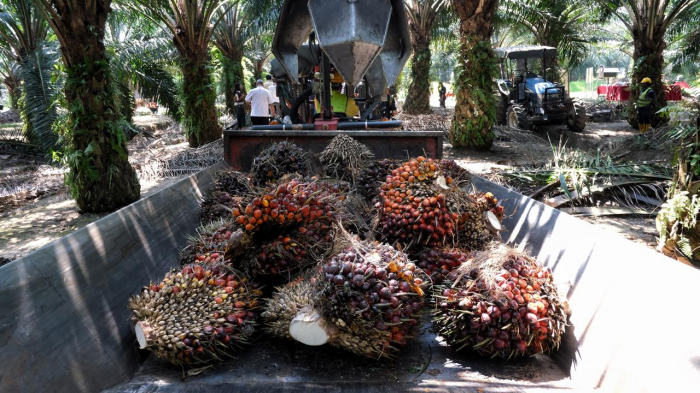
Oil palms are hugely productive and cheap to grow, which has been largely responsible for their rapid proliferation (Credit: Getty Images)
As well as its unique chemistry, palm oil is cheap. And it’s cheap because oil palm is something of a wonder crop – it grows relatively quickly, is easy to harvest, and is spectacularly productive. A hectare of oil palm can reliably produce four tonnes of vegetable oil every year, compared to 0.67 tonnes for rapeseed, 0.48 tonnes for sunflowers, and just 0.38 tonnes for soy beans. Under ideal conditions, high-yield oil palm cultivars can produce more than 25 times as much oil as soy can for the same area of farmland. Thus, ironically, a ban on palm oil would lead to a catastrophic increase in deforestation, as anything we replace it with will need much more land to grow on.
But it is possible to grow oil palm in a way that limits its impact on the environment. Most companies in the West purchase palm oil that is certified by the Roundtable for Sustainable Palm Oil (RPSO). But demand for sustainable palm oil, and the willingness to pay a price premium for it, is limited. The market for sustainable palm oil is already over-supplied, leading to producers selling certified oil unlabelled on the wider market. And the RPSO has been criticised as opaque and ineffectual, with little power to compel change among growers.
“People from the Malaysian Palm Oil Board talk about sustainable palm oil, but I struggle to see how they’re selling anything as sustainable,” says Kyle Reynolds, a crop scientist who until recently worked at Australia's CSIRO research centre.
Oil palm only grows within 20 degrees of the equator – an area which also happens to be where rainforests grow and is home to 80% of all species in the world. What if we could reduce the pressure on tropical rainforests by creating a plant that was just as productive as oil palm, but could grow anywhere? That’s what Reynolds and his colleagues have been working on.
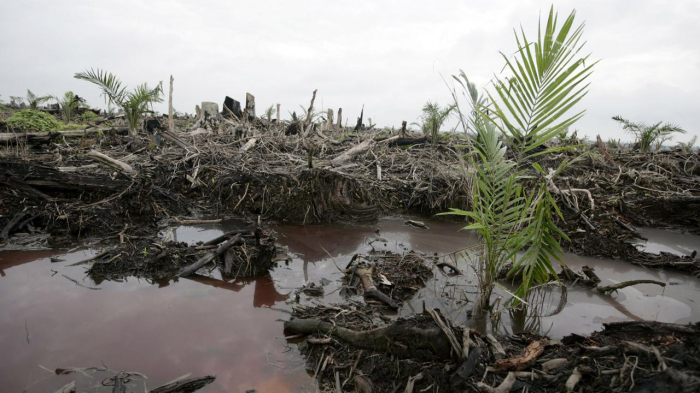
Clearing of the rainforests in Malaysia and Indonesia is destroying the last remaining habitats of endangered species like Orangu-tans (Credit: Getty Images)
“Oil palm can’t grow too far south or too far north, it’s very much a tropical crop,” says Reynolds. “Something that has high biomass should be more adaptable, able to grow in multiple climates.”
At their laboratory in Canberra, CSIRO researchers have inserted genes for high rates of oil production into leafy plants such as tobacco and sorghum. The plants can be crushed and the oil harvested from their leaves. Normally, tobacco leaves contain less than 1% vegetable oil, but Reynolds’ plants boast up to 35%, meaning they yield even more vegetable oil than soy bean
Researchers have inserted genes for high rates of oil production into leafy plants such as tobacco and sorghum
There is still some way to go: a trial of this high leaf oil in the US failed, possibly due to the local climate (the transgenic plant can’t legally be grown in Australia). And the oil produced by the tobacco is “quite a long way” from palm oil, as the fatty acids that make them up are longer and more unsaturated. It means it would need processing to achieve similar properties. However, Reynolds says that creating a new and improved oil-producing tobacco could take around 12 months – if someone is willing to invest in the research necessary.
“It’s a huge industry, the current value for oil palm is US$67bn,” says Reynolds. He echoes Nelson’s concerns. “It should be possible to produce palm oil in a non-palm oil plant. Can we do it? Sure. But how does it compete price-wise?”
It’s clear that for now, palm oil isn’t going anywhere. It’s nearly impossible to avoid, and just as difficult to replace. But the scientific potential is there to mediate our impact on the world by developing more sustainable ways to meet our food, fuel and cosmetic needs. All that’s required is the will to make that change happen – and for that will to become as ubiquitous as palm oil itself.
BBC
More about: palmoil















































